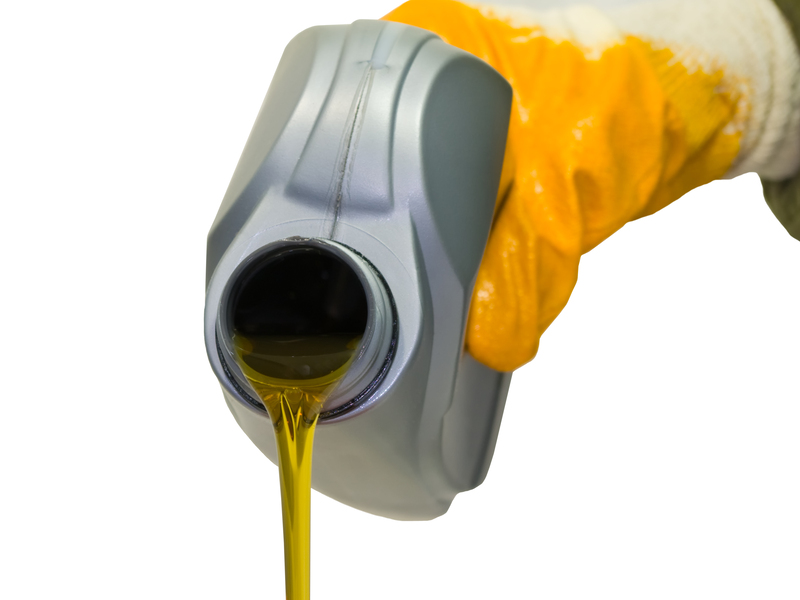A Future Without Microplastic Pollution: Can We Achieve It?
Imagine a world where oceans, rivers, animals, and even our own bodies are free from the silent, dangerous threat of microplastic pollution. As concern continues to rise about this invisible menace, many are asking: Is a future without microplastic pollution truly attainable? This comprehensive article dives into the challenges posed by microplastics, ongoing innovations, global efforts, and the path toward a cleaner, healthier planet.
Understanding Microplastic Pollution: What Are Microplastics?
Microplastics are tiny plastic particles, typically less than five millimeters in size. They are everywhere--in ocean depths, Arctic ice, and our daily food and water. The pollution caused by microplastics originates from various sources and is alarmingly persistent due to plastic's resilience.
Types of Microplastics
- Primary microplastics: Manufactured as small particles for specific uses, such as microbeads in cosmetics and personal care products.
- Secondary microplastics: Formed by the breakdown of larger plastic items like bottles, bags, and clothing over time due to sunlight, weathering, and physical abrasion.
How Do Microplastics Enter the Environment?
Microplastics enter ecosystems via several pathways:
- Washing synthetic clothing releases fibers into wastewater.
- Improperly disposed plastics degrade into fragments in the environment.
- Tires and road markings shed particles due to friction.
- Cosmetic microbeads get flushed into waterways.

The Alarming Impact of Microplastic Pollution
Environmental Consequences
Microplastic contamination has devastating effects on aquatic life and ecosystems. Marine organisms often mistake microplastics for food, resulting in injury, poisoning, and even death. As these tiny particles accumulate up the food chain, they can affect entire marine ecosystems and jeopardize biodiversity.
Human Health Risks
Microplastic pollution is not just an environmental issue--it's a human health crisis. Studies have found microplastics in drinking water, food, and even air. Regular ingestion and inhalation could pose risks ranging from cellular damage to disruption of endocrine function, although the long-term implications are still under study.
Current Solutions to Reduce Microplastic Waste
Before discussing if a future free from microplastics is possible, let's analyze the existing strategies to combat the problem.
1. Policy and Legislation
- Bans on Microbeads: Countries like the USA, UK, and Canada have banned microbeads in cosmetics.
- Single-use Plastic Reduction: Bag, straw, and packaging bans, as well as plastic taxes, are becoming more common globally.
- Extended Producer Responsibility (EPR): Holds manufacturers accountable for the total lifecycle of their products, including waste management.
2. Technological Innovations
- Wastewater Treatment Improvements: Modern filtration techniques remove more microplastics before treated water is released.
- Novel Filters: Devices like laundry bags and washing machine filters capture synthetic fibers from clothes.
- Alternative Materials: Companies are developing biodegradable and compostable packaging to reduce future microplastic creation.
3. Consumer and Industry Initiatives
- Awareness campaigns about the impact of single-use plastics.
- Promotion of refillable, reusable products.
- Corporate commitments to reduce plastic in supply chains.
Global Efforts: Is Plastic-Free Living Realistic?
The Zero Microplastic Challenge
Many countries and organizations have set ambitious targets to minimize or completely eliminate microplastic pollution. The United Nations Environment Assembly and the European Union are both pushing for more robust, globally coordinated actions to tackle microplastics in all environments.
Promising International Agreements
- The United Nations Global Plastics Treaty aims to create binding international obligations to address the full life cycle of plastics, including microplastics.
- The Basel Convention amendments now regulate certain plastic waste shipments, pushing for better waste management and recycling worldwide.
Scientific Collaboration
Researchers worldwide are joining forces to better understand the distribution, persistence, and effects of microplastics--paving the way for more effective policies and remediation strategies.
Can We Truly Achieve a Microplastic-Free Future?
The central question remains: Is a future without microplastic contamination possible, or is it merely a utopian vision? Here's what the path looks like.
Overcoming Obstacles to Eliminate Microplastic Pollution
- Plastic's Inherent Durability: Plastics, by design, are durable and resistant to decomposition. Even with a total global ban on plastic use today, the microplastics already present would persist for centuries.
- Detection and Monitoring: Microplastic particles are often microscopic and invisible to the naked eye, complicating cleanup, tracking, and prevention efforts.
- Economic Dependence on Plastics: Plastics are foundational to modern society. From food safety to medical devices, many industries rely on plastic's versatility and affordability.
- Unequal Progress: Developed countries may introduce advanced technologies and stricter regulations, while developing economies face resource constraints and infrastructure gaps.
The Critical Role of Innovation
Despite immense challenges, innovation inspires hope. From breakthroughs in materials science to revolutionary waste management systems, the world is pushing boundaries to combat the spread of microplastic waste. Emerging technologies might offer game-changing solutions:
- Enzymatic Plastic Degradation: Certain bacteria and fungi have evolved to break down plastics. Harnessing and scaling these biological processes could help remediate existing pollution.
- Green Chemistry Alternatives: Scientists are developing new materials that degrade rapidly and safely, providing alternatives to conventional plastics.
- Remote Sensing and Nanotechnology: Advanced tools allow more precise detection and removal of micro particles from air, water, and soil.
Education and Behavioural Shifts
A sustainable, plastic-free future also hinges on societal transformation. Individuals, communities, and industries must recognize the full scale of the microplastic crisis and shift their choices towards environmental stewardship.
- Support for research and innovation in natural materials.
- Widespread adoption of zero-waste lifestyles.
- Community-driven cleanup and plastic reduction programs.
- Raising public awareness about microplastic hazards and proper disposal practices.
What Would a Microplastic-Free World Look Like?
Envisioning a world without microplastic pollution motivates change. Here are some vital differences we'd observe:
- Healthier Oceans and Waterways: Marine animals would no longer face choking or poisoning hazards; ecosystems would begin to recover.
- Cleaner Food Chain: Food safety improves as toxic plastics no longer accumulate in fish, seafood, salt, and water supplies.
- Improved Human Health: Decreasing daily exposure to microplastics may reduce as yet unknown health risks, making for longer, healthier lives.
- Resilient Ecosystems: Reduced biodiversity loss would help restore balance to natural habitats and boost climate resilience.

The Road Ahead: Steps Toward a Future With Minimal Microplastic Contamination
A world completely free from microplastics may not be achievable in the immediate future. However, by implementing strong policies, groundbreaking technologies, and mindful behaviors, we can significantly reduce microplastic pollution and pave the way for restoration. Here are the crucial steps:
1. Intensifying Global Regulation
- Harmonize policies banning unnecessary plastics around the world.
- Introduce international standards for detecting and reporting microplastics.
- Mandate producer responsibility across all industries using plastic.
2. Revolutionizing Materials and Design
- Substitute fossil-based plastics with biodegradable or compostable alternatives wherever possible.
- Engineer textiles that shed fewer fibers during washing.
- Design everyday products for longevity and recyclability.
3. Investing in Clean-Up Infrastructure
- Upgrade wastewater and stormwater treatment facilities with advanced filtration.
- Develop community-led monitoring and removal programs.
- Employ innovative cleanup technologies such as floating barriers and nanofilters in highly polluted areas.
4. Strengthening Research and Global Cooperation
- Fund long-term studies on the effects of microplastic exposure on humans, wildlife, and ecosystems.
- Share best practices and technological advances across borders.
- Develop unified databases to track the spread and sources of microplastic particles.
5. Empowering Individuals to Make a Difference
- Opt for reusable over disposable--bags, bottles, and utensils.
- Choose clothing and products made from natural materials.
- Stay informed about the environment and participate in local plastic reduction efforts.
- Press for policy change by supporting advocacy organizations.
Conclusion: Charting a Path Toward a World Without Microplastic Pollution
The future without microplastic contamination lies in a global commitment to change. Although eliminating every microplastic particle may be impossible in the short term, we can move toward a much cleaner planet. By transforming industry, policy, and personal habits, we can drastically reduce microplastic pollution and heal our environments for generations to come.
Our destiny is in our hands: What role will you play in making a microplastic-free future a reality?